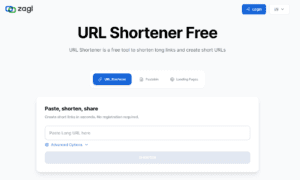We’ve all experienced it – you heat up leftovers from last night’s potluck dinner, and in what feels like no time at all, the food has already gone cold. This phenomenon is not only frustrating but can also impact the taste and enjoyment of your meal. In this article, we’ll explore five reasons why reheated food gets cold faster and offer solutions for keeping your dishes warm for longer periods.
Heat Distribution:
One reason why reheated food cools down quickly is that microwaves and ovens may not heat the food evenly. This uneven distribution of heat leads to a disparity in temperature throughout the dish, causing some parts to cool down faster than others. To mitigate this issue, you can stir or rotate the food during the reheating process to ensure more uniform heating.
Moisture Evaporation:
When you reheat food, moisture evaporates from the dish, which cools it down more quickly. In fact, the evaporation of water from your food is a natural cooling mechanism that helps prevent overheating. To maintain the warmth and moisture of your food, you can cover it with a lid or foil during the reheating process. This will also help to keep your food from drying out.
Surface Area and Thickness:
The larger the surface area and the thinner the food, the faster it will cool down. This is because heat can escape more quickly from a greater surface area, and thinner foods have less mass to retain heat. To maintain warmth, consider dividing your leftovers into smaller portions or using smaller containers when reheating. This will help to reduce the surface area and retain heat for longer periods.
The Food Warmer Factor:
Food warmers are a fantastic solution for keeping your dishes warm, particularly when hosting parties or gatherings. The best food warmers for parties are designed to maintain a constant temperature, ensuring that your guests can enjoy hot, delicious meals throughout the event. By investing in a high-quality food warmer for preparing the recipes and cooking ideas, you can avoid the frustration of reheated food getting cold quickly and enhance the dining experience for everyone involved.
The Plate or Container:
The materials used in the plate or container holding the food can also impact how quickly it cools down. Ceramic or glass containers tend to hold heat better than plastic or metal containers. When reheating your food, consider using a ceramic or glass container, and if possible, preheat the container before adding the food. This will help to maintain a consistent temperature and keep your food warmer for longer periods.
Solutions for Keeping Food Warm:
- Use an insulated food carrier: Insulated food carriers help to maintain the temperature of your food, making them ideal for transporting meals to parties or events.
- Use a slow cooker: Slow cookers can keep food warm for extended periods, and they are perfect for serving dishes like soups, stews, and casseroles.
- Use a chafing dish: Chafing dishes use a heat source, like a candle or fuel canister, to keep food warm and are commonly used in buffets and catering events.
- Wrap food in foil: Wrapping your food in aluminum foil can help to retain heat and keep your dish warm for a longer time.
- Preheat serving dishes: Warming your serving dishes before placing the food on them can help to maintain the temperature of your meal.
Conclusion:
Understanding why reheated food gets cold faster is essential for finding effective solutions to maintain warmth and enhance your dining experience. By implementing some of the strategies mentioned above, such as investing in a high-quality food warmer for parties or using an insulated food carrier, you can enjoy delicious, warm meals even after reheating. With these tips in mind





























